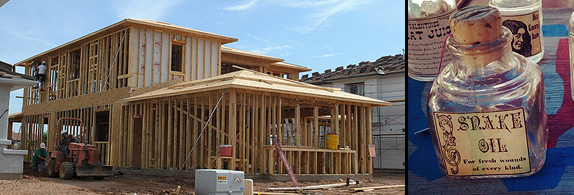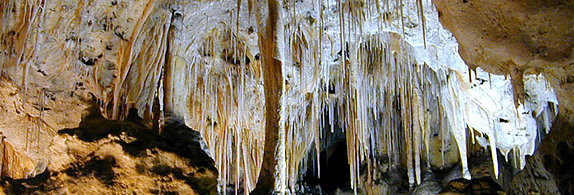Short Range Thinking About Water is Dead End Thinking

When it comes to water in New Mexico it seems almost a cliché to say that massive changes are coming in the way we live our lives and run our businesses, if we choose to stay in the Southwest or have no other choices.
Over-populated mega-cities; the prospects of mega-droughts in major water source regions; human abetted climate change; fossil fuels still winning the business wars against alternative green energy; farming threatened in rural New Mexico, the central valley in California, and on the west slope of the Rockies in Colorado; diminishing and contaminated aquifers—none of this adds up to a good picture for preserving the status quo.
But even though we’ve had many years to start thinking our way through this emerging crisis, we’ve really done very little long-range planning in New Mexico and Albuquerque, despite the all too obvious legal war chests building and water planning going on in Arizona, Nevada, Colorado, California, and Texas—planning that is strategic and opportunistic at best and cutthroat at the worst.
New Mexico, though, stays optimistic about the future and largely unprepared. The view of its leadership is apparently built on the assumption that the increasingly arid present is an anomaly, a fast changing problem that will change back to the good old days sooner than later and faster than slower. It’s a kind of thinking that a new book called The History Manifesto has dubbed “the spectre of the short term.”
In reviewing the book by Jo Guldi and David Armitage, David Reynolds writing in the New Statesman explains the general absence of long-range policy about global climate change and other issues by saying that “politicians are creatures of the short term who prefer to ignore big problems that cannot be solved, or at least visibly ameliorated, within an electoral cycle. They are also busy people who do not have time for lengthy reading and reflection.” The same can be said about members of the Wall Street, quarterly-report driven business class who often find themselves in elective office.
Using a long view of history to create public policy requires politicians taking immediate risks with public money and educated guesses about the future. This is something few of them like to do. And unhappily there are at least two very good ways of getting around having to. Both involve some form of denial or for-profit scheming that takes short term financial plans and makes them look like long-range strategies.
One is to create a positive prediction of the future, one that bolsters the status quo and gambles public money to prepare for it. This would be a kind of trend analysis in which the past is believed to be an accurate picture of the future. Investors have lost trillions of dollars on the near inevitable fallacy of this point of view. But it’s the mindset that is proposing and approving the huge Santolina Master Plan on the southwest mesa, a retro 1950s idea of sprawling growth that doesn’t match the projected picture of probable water availability in our future.
Another is to create a future based on the idealized extension of one’s business product and the political maneuvering of one’s funders and allies so the present is made to look like the prologue to a future that suits your goals, which is what the fossil fuel industry is struggling to do at the moment.
The first two are typical short-range policy strategies based, as much as anything, on the human animal’s inherent mistrust and neurotic dislike of change.
The long-range view, in our burgeoning information age, might be based on a holistic view of data and its rational assessment. Policy makers might look to experts and scientists and disinterested public servants to present them with what seem like scenarios of high probability futures.
In Albuquerque, at the moment, the dominant scenario of the future that seems to be guiding both civic and business policy is a projection of the past into infinity, with a few dry patches along the way. It’s a short-term projection that wants to see a high probability of booming post-war growth extending on indefinitely, water or no water. It’s wishful thinking morphed into a deadly formula for being tragically unprepared.
Adequate long-range thinking about water in New Mexico would at least have to take into consideration water shortages in neighboring states, droughts in California and Colorado, the drying up of the Colorado River basin and the threat to the Colorado Compact as we know it. It would have to account for the seeming switch from heavy and somewhat reliable snow packs to unpredictable monsoonal storms of frequently destructive power, pressure on cities around the west to “find” new water through desalination, or “create new water” through conservation and reuse or take new water from someplace else that can’t defend itself—like Texas is trying to do to New Mexico in its suit over the Rio Grande. Long-range thinking would also have to process the rather alarming state of aquifers around New Mexico and the West, aquifers we’ve relied on in the past but that are now being used up or unconscionably polluted like parts of the aquifer in the Middle Rio Grande Basin.
This is all a tremendous amount of information from which to make sense. But neither the short-term nor the long-term picture looks anything like the boom years, but rather like the Dust Bowl years and the decades of drought that drove pre-Pueblo people out of Chaco canyon and eventually into the Rio Grande Valley some 900 years ago. Big changes in climate require everyone to adapt. There’s no getting out of it.
And now researchers are telling us that there’s an 80 percent chance that the West will have “megadroughts” of 35 years or longer in the later part of this century. To make it worse, National Geographic informs us that U.S. satellites from the National Aeronautics and Space Administration, using a detection system known as GRACE (Gravity Recovery and Climate Experiment), show how badly we’ve been over-using our aquifers, many of which are un-rechargeable, and how close we are to draining them dry.
If New Mexico’s leaders can’t start taking drought and climate change seriously, we’ll be not only the victims of the super-rich states around us scavenging like pirates for easy water to steal, but we’ll also be so economically devastated that we won’t be able to seize the opportunities that a changing future presents to flexible, far-seeing and resourceful cities and their leaders.
What a terrible time it is to be lead by climate change deniers and retro developers who think our present drought is not a “new normal” trend but a passing problem soon gone and forgotten, and that happy days will be here again real soon.
Zombie Subdivisions: A Vision of the Future in the Arid West

The Lincoln Institute of Land Policy, out of Cambridge, Massachusetts, has focused attention lately on what they call “arrested developments,” or “zombie subdivisions” littering Western landscape. We’ve all seen them around Albuquerque, these living dead places—big tracts of platted land with clusters of houses, now often foreclosed, and the rest just empty, dusty dirt roads.
Zombie subdivisions are monuments to foolish ambitions and faulty predictions. New Mexico’s modern history has a lot of them stretching back to the desert wastes of the Deming Ranchettes, Horizon Corporation’s vacant Rio Communities east of Belen, and AMREPS still empty plats near Rio Rancho itself. Some might argue that Rio Rancho has become something of a zombie too after the 2008 housing bust. And, of course, the grandiosity of the proposed Santolina development on the southwest mesa near Albuquerque seems like a prime candidate for zombiedom with its extravagant promises of 95,000 new residents and 75,000 new jobs.
Zombie subdivisions are never just things of the past. Their scars linger for decades. And they might also become symbols of the future if we don’t take drought and climate change as opportunities to rethink our civic goals and the meaning of growth in a world of limited vital resources.
Last year, KOB-TV did a report on the “housing crisis” in Albuquerque. It sited about 101,000 “undeveloped residential lots “ in the metro area, some 73,000 of them in Sandoval County on land platted by AMREP Corporation that failed to flesh out into more housing in Rio Rancho
Imagine what might happen to our city and the Middle Rio Grande Valley if a mega-drought of many dozens of years should hit the West. The whole city could become a Zombie place with dead big box stores, ragged struggling malls, neighborhoods with empty lots, empty houses and no in-fill, Santolina becoming a great cloud of sand, Rio Rancho a network of deserted roads. Only the interior of the city might have a chance to keep from looking like a zone of the living dead.
The march of the zombies would hit every major metro area in the West during a catastrophic drought. The cities that start preparing now to meet such a challenge would have a tremendous upper hand. Cities that focus now on infill incentives, on repairing water infrastructure rather than extending it, on building gray and even black water systems, on water banking in the aquifer, on becoming dedicated de-contaminators of compromised groundwater supplies and who raise their water rates dramatically will stand a chance to sustain themselves if goals of prosperity have been reduced to survival success.
Some might think this is a silly doomsday scenario to be ignored as wildly depressing and irresponsibly pessimistic. But think of it this way. If the economic recession and housing bust of 2008 can wreck New Mexico’s economy for seven years despite slight up-ticks every now and then, think what a genuine natural disaster might do, especially one that lingers for many years and drains our local economy as dry as the sand dunes of the West Mesa.
Western cities like Albuquerque really can’t afford to be in a state of arrested development anymore, daydreaming in the past while the great droughts of the 21st century are building on the horizon. The metaphor of zombie developments says it all for the unprepared cities of the future. They may be moving clumsily but they’re ugly, “dead,” and pathetic.
Why We Love New Mexico: Carlsbad Caverns

If you’ve been to Carlsbad Caverns, even once, you know perhaps in a clearer way than most people that the planet holds astonishing mysteries and wonders that it normally is reluctant to reveal.
I sometimes think of the caverns as representing the great unconscious life of the earth. If the past is stored somewhere in our minds perhaps it is stored symbolically, and even literally at times, in places of cosmic beauty and magnificence deep in the dust we are all made of. More than 750 feet below the surface or more than 75 stories down—nearly three quarters of the Empire State Building—is the immense vault of the past.
If you take the elevator down you end up in the Big Room, 4,000 feet long, 625 feet wide, and 255 feet tall. If it weren’t for the electric lights, you’d be in the utter darkness of stone, a place that Virgil might have mistaken for the vestibule of the underworld. It is among the most truly awe-inspiring things anyone will ever experience.
Underneath the surface, much like underneath an individual’s persona, resides the residue of the movement of time, its living history. Some 250 million years ago the area around the caverns was the coastline of an inland ocean with sea creatures that created what’s known today as the Capitan Reef. This same period coincides with the Permian-Triassic extinction 252 million years ago. It is the greatest die off in earth’s history with 70 to 90 percent of all land and water life on the planet going extinct. The cause of this calamity is still a matter of speculation. Was it caused by a catastrophic eruption of volcanoes around the world or by a collision with one or more asteroids? Was it a massive unleashing of oceanic methane, or huge coal fires in the earth, or sudden climate change?
Perhaps these early events in the creation of the caves give their magnificence the curious melancholic aura that I felt when I first stepped into the abyss of the great cavern. It felt more like a Tartarus or a Limbo than an Elysian Field. But after a quick look around I discovered I wasn’t in some kind of dungeon of the afterlife, but in an Aladdin’s Cave filled with wonders and treasures I’d never dreamed of before.
Sulfuric acid dissolved the limestone laid down by that ancient inland sea and cut through the remains of the Capitan Reef that grew there, to hollow out the Big Room and some 118 other caverns in the region. Like many natural forces, these interior spaces created sights the human imagination can’t help being drawn to. The unconscious (I didn’t say non-conscious) world of nature fascinates the human mind.
The Carlsbad Caverns hold a fascination like few other places. To be in the cave can feel something like what our memory trove might look like if it had a physical form. Perhaps that’s why the experience of the illumined formations of the Carlsbad abyss is so intimate and personal, despite its overawing, massive beauty. In the caverns you understand in a profound internal way that you are a part of the natural world too. That’s why your imagination looks to nature for metaphors to describe the human condition. In the caverns it is, in every sense of the word, a deep experience.
(Photos: Spigot by Vinoth Chandar / CC; house being built by Jay Thompson / CC; snake oil by Wesley Fryer / CC; Carlsbad Caverns by Eric Guinther / CC)




Responses to “Provincial Matters, 3-2-2015”